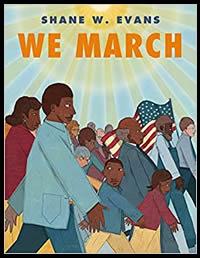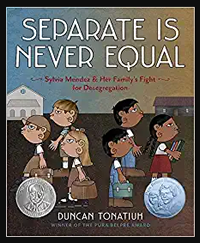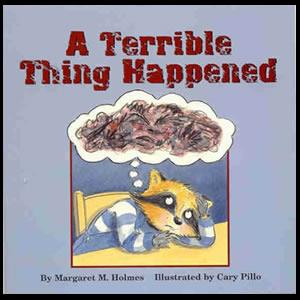|
 We March We March
"On August 28, 1963, a remarkable event took place—more than 250,000 people gathered in our nation's capital to participate in the March on Washington for Jobs and Freedom. The march began at the Washington Monument and ended with a rally at the Lincoln Memorial, where Martin Luther King Jr. delivered his historic "I Have a Dream" speech, advocating racial harmony. Many words have been written about that day, but few so delicate and powerful as those presented here by award-winning author and illustrator Shane W. Evans. When combined with his simple yet compelling illustrations, the thrill of the day is brought to life for even the youngest reader to experience."
|
|
 Separate is Never Equal Separate is Never Equal
"Almost 10 years before Brown vs. Board of Education, Sylvia Mendez and her parents helped end school segregation in California. An American citizen of Mexican and Puerto Rican heritage who spoke and wrote perfect English, Mendez was denied enrollment to a "Whites only" school. Her parents took action by organizing the Hispanic community and filing a lawsuit in federal district court. Their success eventually brought an end to the era of segregated education in California."
|
|
 A Terrible Thing Happened A Terrible Thing Happened
"Sherman Smith saw the most terrible thing happen. At first he tried to forget about it, but soon something inside him started to bother him. He felt nervous for no reason. Sometimes his stomach hurt. He had bad dreams. And he started to feel angry and do mean things, which got hi m in trouble. Then he met Ms. Maple, who helped him talk about the ter rible thing that he had tried to forget. Now Sherman is feeling much b etter. This gently told and tenderly illustrated story is for childre n who have witnessed any kind of violent or traumatic episode, includi ng physical abuse, school or gang violence, accidents, homicide, suici de, and natural disasters such as floods or fire. An afterword by Sash a J. Mudlaff written for parents and other caregivers offers extensive suggestions for helping traumatized children, including a list of oth er sources that focus on specific events."
|